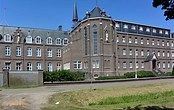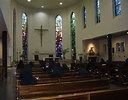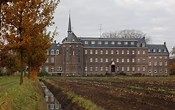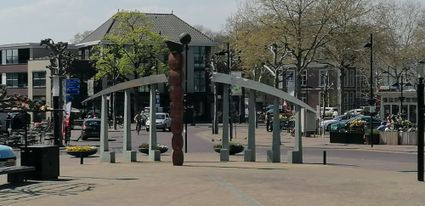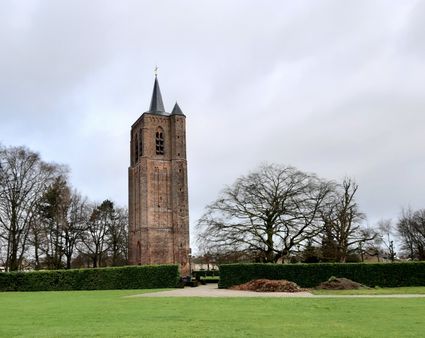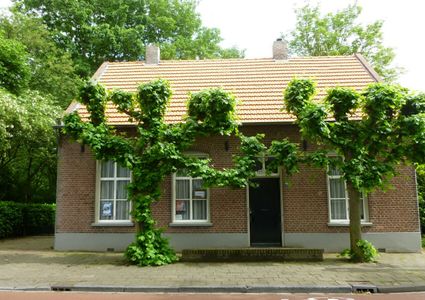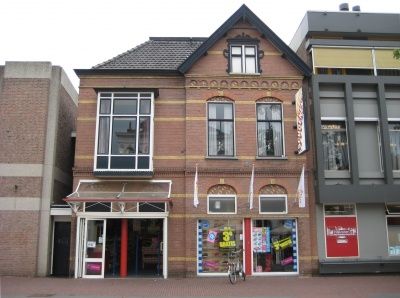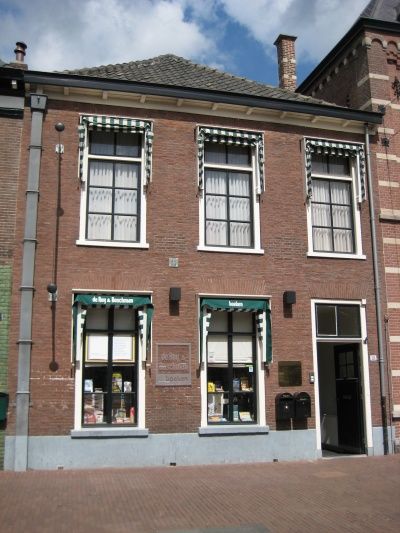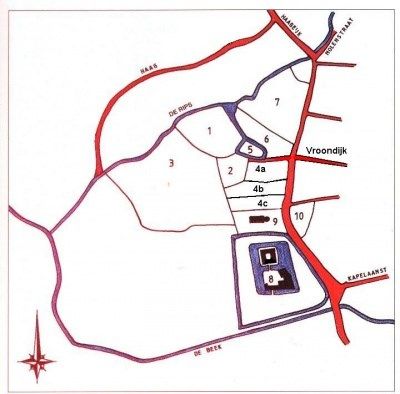Missieklooster Heilig Bloed
The Missionary Convent of the Holy Blood is a convent of the Missionary Sisters of the Precious Blood located on Kloosterdreef in Aarle-Rixtel.
This congregation, the Missionary Sisters of the Precious Blood, was founded in 1885 in Mariannhill, near Durban in South Africa, by Trappist Franz Pfanner. In 1889 they started an educational convent in Kirchherten, Germany, but the Kulturkampf forced the sisters to leave Germany. They therefore moved to a convent in Helden-Panningen, the St. Joseph's convent, which they moved into permanently in 1901. This convent soon became too small and a piece of land with a farm in Aarle-Rixtel was purchased, on which a large convent was built with an accompanying farm. The longhouse is therefore older and dates from approximately 1845.
On 15 July 1903, 74 si…
The Missionary Convent of the Holy Blood is a convent of the Missionary Sisters of the Precious Blood located on Kloosterdreef in Aarle-Rixtel.
This congregation, the Missionary Sisters of the Precious Blood, was founded in 1885 in Mariannhill, near Durban in South Africa, by Trappist Franz Pfanner. In 1889 they started an educational convent in Kirchherten, Germany, but the Kulturkampf forced the sisters to leave Germany. They therefore moved to a convent in Helden-Panningen, the St. Joseph's convent, which they moved into permanently in 1901. This convent soon became too small and a piece of land with a farm in Aarle-Rixtel was purchased, on which a large convent was built with an accompanying farm. The longhouse is therefore older and dates from approximately 1845.
On 15 July 1903, 74 sisters moved into the new convent and on 6 October 1906 it became the new mother house of the congregation. Until then it was in Mariannhill in South Africa. In 1910 a noviciate wing was added. During the First World War, sick Belgian refugees were nursed. In 1938, another wing, the Theresa Wing, was added. During the Second World War, the monastery was again a place of refuge, this time for evacuees from Aarle-Rixtel. Allied soldiers then took up residence.
In the 1960s, the chapel was renovated and stained glass windows by Sister Hadwig Münz were installed. Gradually, the convent became a place of refuge for returning missionaries. However, as before, it is also a training centre for women who want to become nuns. The generalate of the convent moved to Mönchengladbach in 1967 and to Rome in 1970.
Since 2008, the long-gabled farmhouse of the monastery has housed a restaurant. The monastery also has a guesthouse for reflection weekends and the like. Although for a long time the language of the monastery was almost exclusively German, since 2003 it has been multilingual. The language of prayer alternates between Dutch and German. There are also many sisters who speak Dutch (and Portuguese) as well as English and Swahili.
Since 2011, the convent garden is partially open to visitors. It is possible to walk to the Lourdes grotto with its Holy Heart prayer room and light a candle. The Lourdes Grotto was built in 1907 and restored in 2011.
